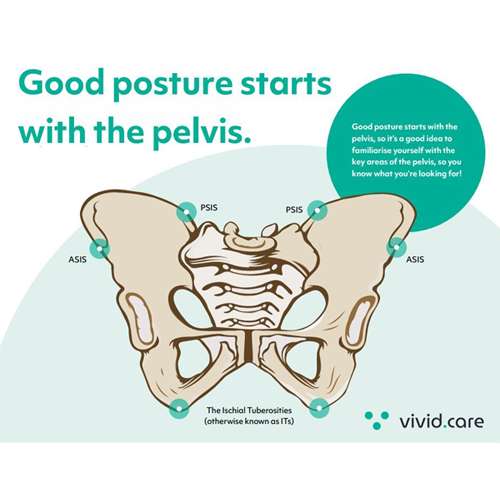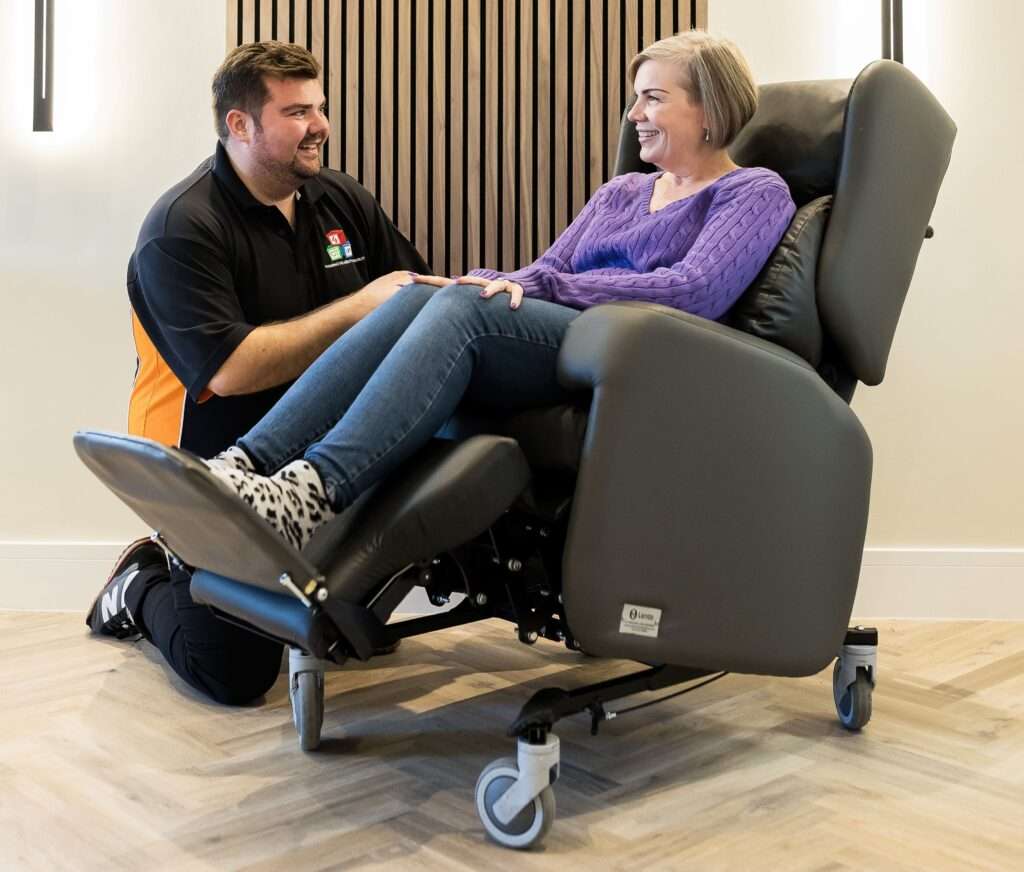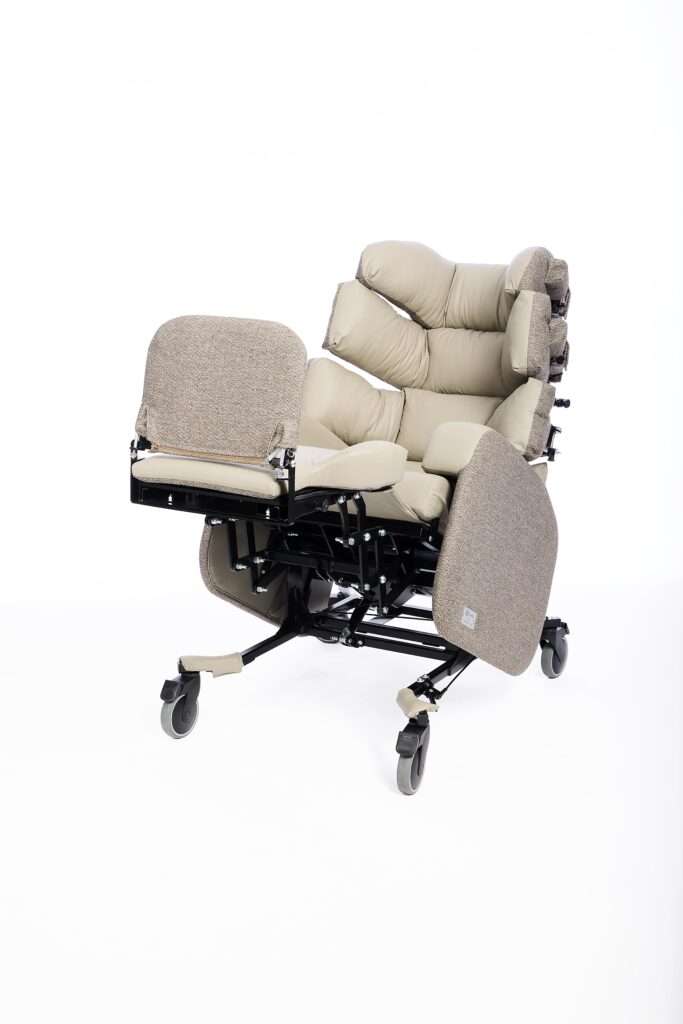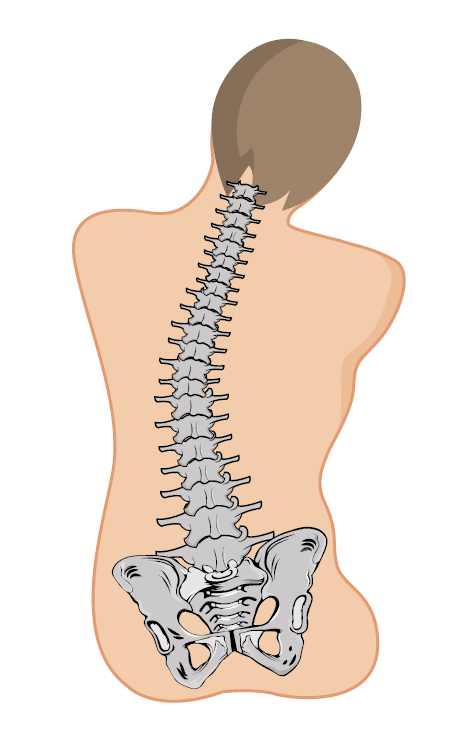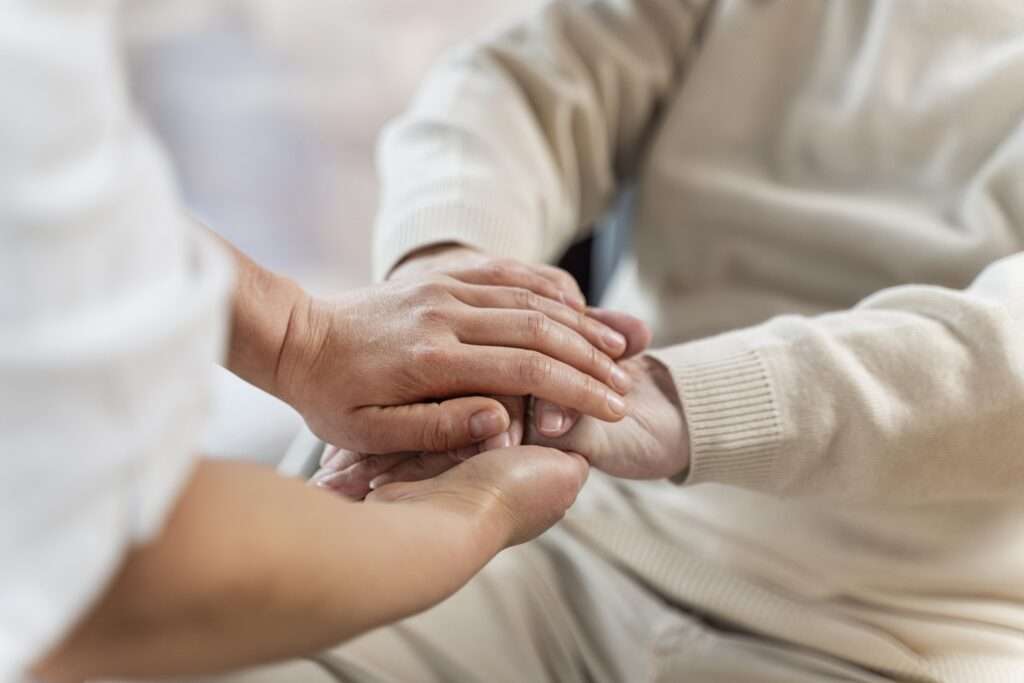In this article we explore the problem of pelvic rotation and learn how specialist seating can help resolve this issue.
Jump straight to...
What is Pelvic Rotation?
Pelvic rotation is a postural problem in which one side of the pelvis is further forward than the other. It’s important to note that this means that one hip is further forward, not necessarily higher or lower than the other (this is pelvic obliquity although the two conditions often go hand-in-hand).
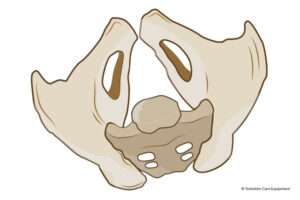
You can assess the position of a person’s pelvis by feeling for their ASIS (anterior superior iliac spine) points. These are the bonier bits at the front of the person’s hips, and once you have found both, you can judge their pelvic positioning.
If you find that the person’s left ASIS is further forward, this is referred to as right pelvic rotation. Conversely, if the person’s right ASIS is further forward, this is called left pelvic rotation.
What Causes Pelvic Rotation?
It can be a sign of many things including asymmetrical leg length, hip flexion, or hip adduction. These can all cause the pelvis to twist to compensate for the positioning.
It is important to note that as with all postural problems, pelvic rotation is not a linear chain of cause and effect.
The problem is more a continuous circle of cause and effect, where if a combination of factors are present these cause issues which then further the problem if they are left unchecked, and thus the cycle continues.
This self-fuelling ‘vicious circle’ can be reversed by removing the root causes and using the right specialist seating and postural techniques.
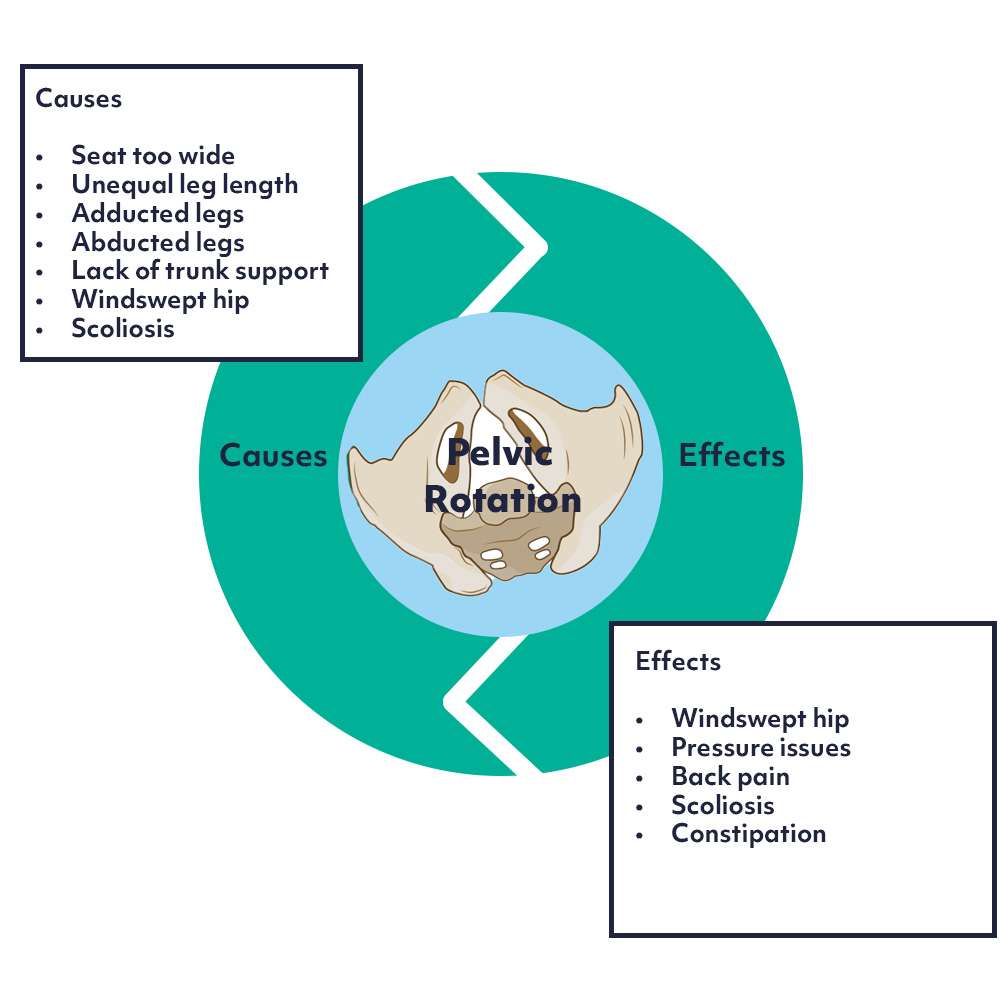
In terms of poor seating, it can also be caused by a lack of backrest support or too wide a seat. As you can imagine, sitting in a chair too wide can lead you to twist and rotate your pelvis to find a more supported position.
It is important to correct this wherever possible, otherwise it can lead to more severe postural problems and back pain.
How to Find the Best Chair for Pelvic Rotation
It is possible to help rectify or alleviate this with specialist seating. Seating needs to be correctly sized to the client to give them the best possible outcome.
The seat width is one of the most crucial measurements in the chair because it helps to secure the person’s pelvis in a level, supported position and ensure pelvic alignment. This, in turn, will prevent the pelvis from rotating any further and it could help get it back to a healthier position.
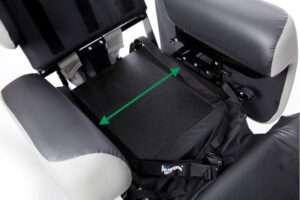
The Lento care chair has adjustable seat width so you can change the chair to match the person’s pelvic positioning if it changes over time.
For this reason, we would highly recommend a chair with built-in seat width adjustment like the Lento care chair. This means that you can change the chair to suit the person’s needs as they change over time.
Another thing to consider when looking for the best chair for pelvic rotation is equal thigh support. This will help to keep the person’s hips level and prevent the rotation from extending any further.
If the client has leg length discrepancy, you may need to take a closer look at footrest options to ensure that they are getting equal support with either leg.
How to Fix Pelvic Rotation
Summary
Pelvic rotation can be a particularly troublesome problem, but it can be combatted using good specialist seating. Check out our free Specialist Seating eBook for more information on this and other postural conditions!
Do you have a client or friend that suffers from pelvic rotation or another postural issue? Book a no-obligation assessment at their home to find out what kind of seating they need.
Arrange an assessment
FAQs
What is pelvic rotation?
Pelvic rotation occurs when one side of the pelvis is further forward than the other, causing misalignment. It is a postural issue that can lead to discomfort and further complications if left uncorrected.
What are the common causes of pelvic rotation?
Pelvic rotation can result from factors like asymmetrical leg length, hip flexion, hip adduction, or poorly fitted seating that lacks proper support.
How does seating affect pelvic rotation?
Inadequate seating, such as a chair that is too wide or lacks backrest support, can make it worse causing the person to twist their body to find a more comfortable position.
How can specialist seating correct pelvic rotation?
Specialist seating helps correct pelvic rotation by providing proper seat width, equal thigh support, and adjustments that align the pelvis and maintain a healthy posture.
What features should I look for in a chair to help with pelvic rotation?
Look for chairs with adjustable seat width, strong trunk support, and equal foot or leg support to ensure the pelvis remains in a neutral position.
Can pelvic rotation cause other postural problems?
If left unchecked it can lead to more severe issues such as scoliosis or windswept hips, as well as chronic back pain.
How do I know if I need a specialist chair for pelvic rotation?
If you or someone you know experiences discomfort due to pelvic rotation or shows signs of postural issues, it’s best to consult a specialist for an assessment to determine the appropriate seating solution.





